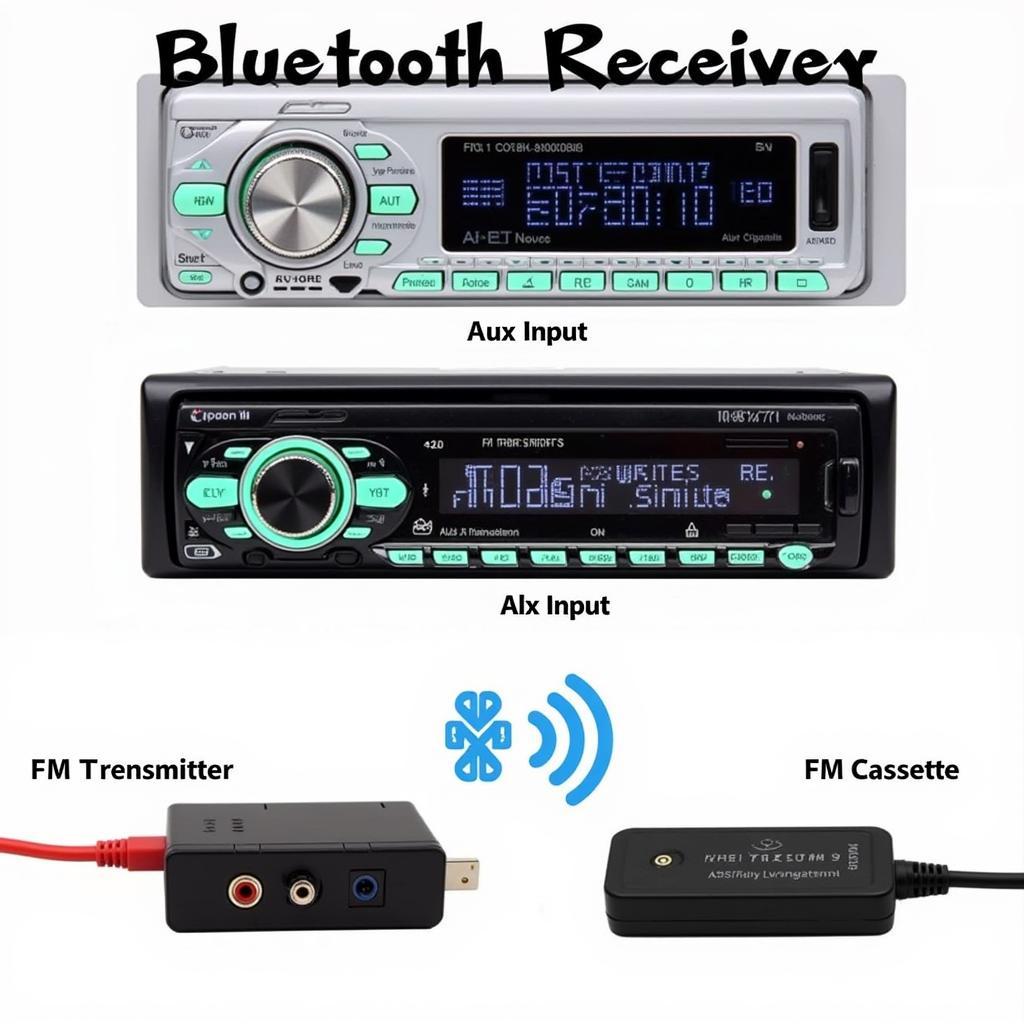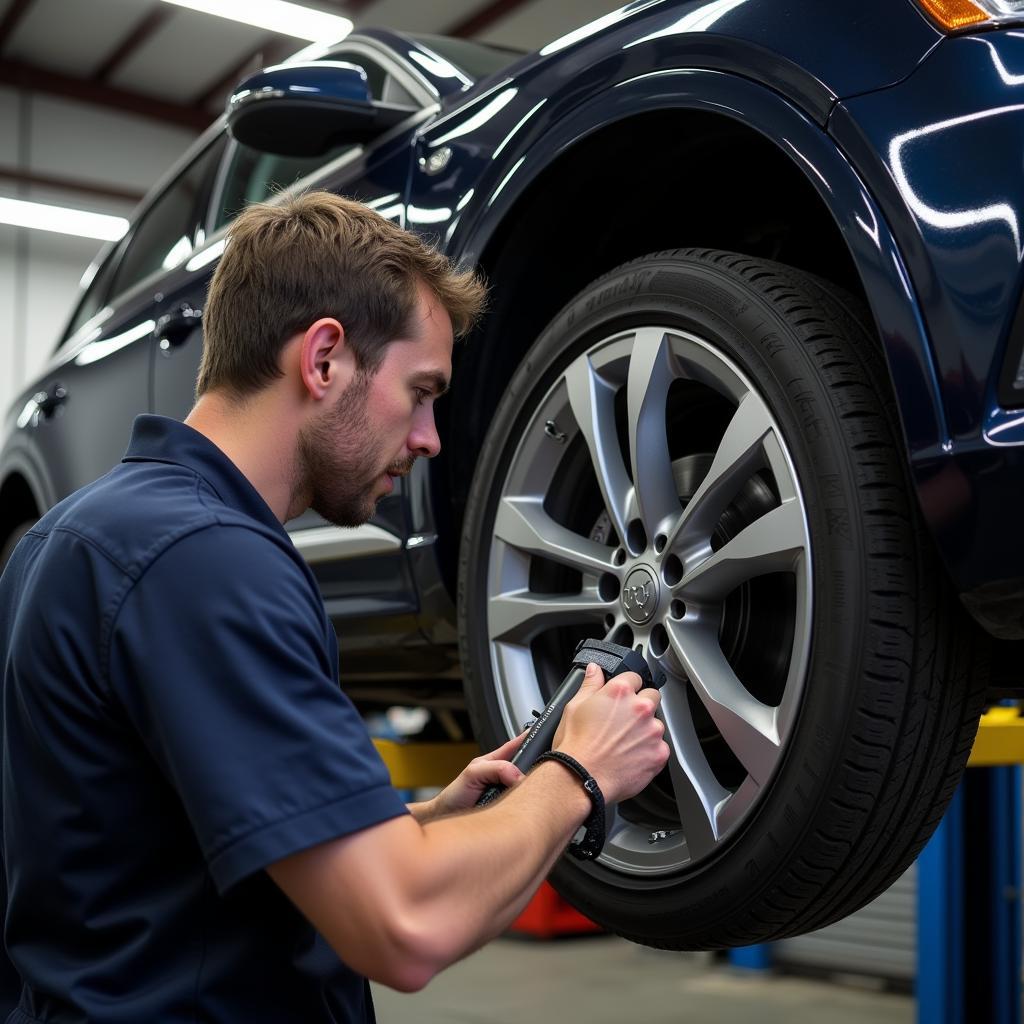A Bluetooth receiver for your car radio can breathe new life into your older car audio system, seamlessly integrating modern wireless technology. In this guide, we’ll delve into everything you need to know about choosing, installing, and troubleshooting these handy devices. We’ll cover the benefits, different types, and how to find the perfect one for your needs.
Why Choose a Bluetooth Receiver for Your Car?
Adding a Bluetooth receiver is a cost-effective alternative to replacing your entire car stereo system. It’s a quick and easy way to enjoy the convenience of wireless audio streaming, hands-free calling, and more, without the expense of a full upgrade. What’s not to love?
Benefits of a Bluetooth Car Adapter
- Wireless Audio Streaming: Enjoy your favorite music apps, podcasts, and audiobooks directly from your phone.
- Hands-Free Calling: Make and receive calls safely and legally with built-in microphones.
- Multiple Device Connectivity: Pair multiple smartphones or tablets to your car’s audio system.
- Easy Installation: Most Bluetooth receivers are plug-and-play, requiring minimal technical knowledge.
- Affordable Upgrade: Significantly cheaper than a new car stereo.
Choosing the Right Bluetooth Receiver
With so many options available, how do you choose the right Bluetooth receiver for your car radio? Let’s explore the different types and factors to consider.
Types of Bluetooth Car Receivers
- Aux Input Receivers: These connect to your car’s 3.5mm auxiliary input jack. This is the most common and easiest type to install.
- FM Transmitter Receivers: These transmit audio over an FM frequency, which you tune your car radio to. They offer decent sound quality but can be susceptible to interference.
- Cassette Adapter Receivers: For cars with cassette players, these adapters mimic a cassette tape and transmit audio through the tape deck. While a viable option for older cars, sound quality can be compromised.
Factors to Consider
- Sound Quality: Look for receivers with aptX or AAC codecs for better audio quality.
- Microphone Quality: If you plan to use the receiver for hands-free calling, microphone quality is crucial. Look for noise-cancellation features.
- Range: Ensure the receiver has a decent Bluetooth range for uninterrupted connectivity.
- Ease of Use: Consider the button layout and user interface for intuitive operation while driving.
If your car battery is acting up, it might be worth exploring why your car battery keeps dying and what things that drain car battery.
 Different Types of Bluetooth Car Receivers
Different Types of Bluetooth Car Receivers
Installing Your Bluetooth Receiver
Most Bluetooth receivers are incredibly easy to install. Here’s a general guide:
- Connect the Receiver: Plug the receiver into your car’s aux input, cigarette lighter, or cassette deck, depending on the type of receiver.
- Pair Your Phone: Put the receiver in pairing mode. On your phone, enable Bluetooth and search for the receiver’s device name.
- Enjoy Your Music: Once paired, you can start streaming music wirelessly.
A completely drained battery can be a nightmare, so read more on what to do if your car battery is totally drained.
Troubleshooting Common Issues
- Poor Sound Quality: Check the connection and ensure the volume is adjusted properly on both the receiver and your car stereo.
- Connectivity Problems: Try restarting your phone and the receiver. If the problem persists, unpair and re-pair the devices.
- No Power: If the receiver is powered through the cigarette lighter, ensure the lighter socket is functioning correctly.
How to Fix Connection Issues with Your Bluetooth Receiver
If you are experiencing connection issues, try these steps:
- Check the distance: Make sure your phone is within the Bluetooth range of the receiver.
- Restart your devices: Restart both your phone and the receiver to refresh the connection.
- Check for interference: Other electronic devices can sometimes interfere with the Bluetooth signal.
- Update firmware: Check if there are any firmware updates available for your receiver.
“Regularly checking your car’s electrical system, including the battery, can prevent unexpected breakdowns,” advises John Smith, Automotive Electrical Engineer at Acme Auto Solutions.
Conclusion
A Bluetooth receiver for your car radio is a simple yet effective way to modernize your car audio system. By following this guide, you can choose the right receiver, install it effortlessly, and enjoy the convenience of wireless audio streaming and hands-free calling. Upgrade your driving experience today with a Bluetooth receiver! Don’t forget to keep a check on your car battery down reasons, as this can indirectly affect the function of your Bluetooth devices. For older Mustangs, we have a dedicated article addressing 2007 mustang battery drain problems.
FAQ
- Do I need a special car stereo for a Bluetooth receiver? No, most Bluetooth receivers are compatible with standard car stereos.
- Can I use my phone’s navigation with a Bluetooth receiver? Yes, you can stream navigation audio through the Bluetooth receiver.
- How much do Bluetooth car receivers cost? Prices range from $10 to $50 depending on features and quality.
- What is the best Bluetooth receiver for my car? The best receiver depends on your specific needs and car’s audio system.
- Can I connect multiple devices to a Bluetooth receiver? Many receivers allow you to connect multiple devices, but only one can stream audio at a time.
- How do I fix static noise from my Bluetooth receiver? Check the connections and try a different aux cable or FM frequency.
- What is the difference between aptX and AAC codecs? Both are high-quality audio codecs, but aptX is generally considered slightly better for Android devices, while AAC is better for Apple devices. If your truck’s battery is consistently failing, you might want to check out my truck battery keeps dying for more information.



